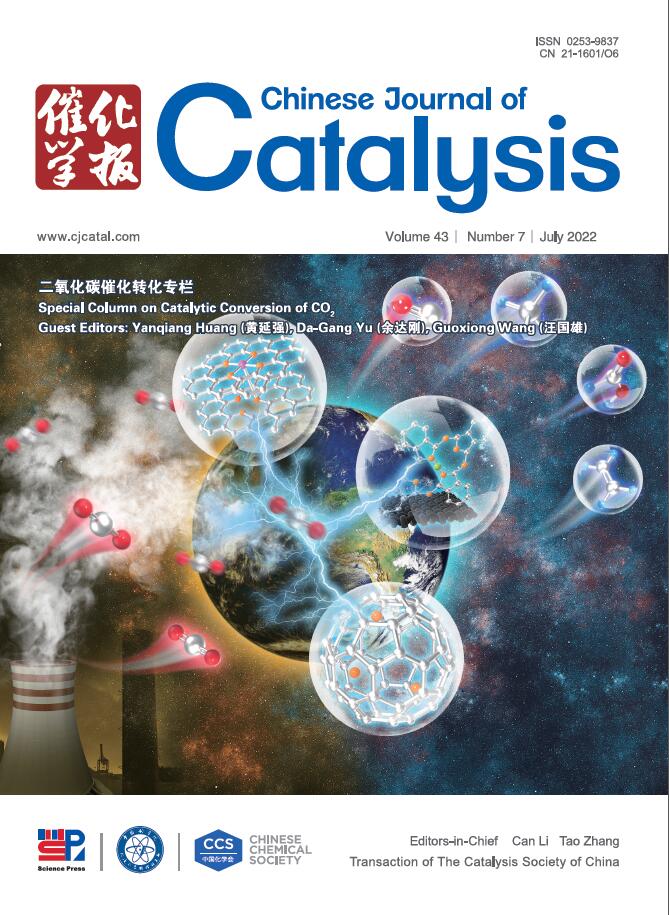Engineering metalloenzymes for new-to-nature carbene and nitrene transfer biocatalysis
IF 17.7
1区 化学
Q1 CHEMISTRY, APPLIED
引用次数: 0
Abstract
Biocatalysis, which involves using enzymes to address synthetic challenges of significance to humans, has rapidly developed into a pivotal technology for chemical innovation. Over the past decade, there has been a notable increase in the use of metalloproteins as catalysts for abiotic, synthetically valuable carbene and nitrene transfer reactions. This trend highlights the adaptability of protein-based catalysts and our growing ability to harness this potential for novel enzyme chemistry. This review focuses on the most recent advancements in metalloenzyme-catalyzed carbene and nitrene transfer reactions, including cyclopropanation, carbene Y–H and C–H insertions, Doyle-Kirmse reactions, aldehyde olefinations, nitrene azide-to-aldehyde conversions, and nitrene C–H insertion. A variety of protein scaffolds have been engineered to offer varied levels of reactivity and selectivity towards pharmaceutically relevant compounds. The application of these new catalysts in preparative-scale synthesis underscores their emerging biotechnological significance. Furthermore, insights into key intermediate and determining factors in stereochemistry are offering valuable guidance for engineering metalloproteins, thereby expanding the scope and utility of these non-natural activities.
工程金属酶用于新自然的碳和亚硝基转移生物催化
生物催化是一种利用酶来解决对人类有重大意义的合成挑战的技术,它已迅速发展成为化学创新的关键技术。在过去的十年中,金属蛋白作为非生物、合成有价值的碳和亚硝基转移反应的催化剂的使用显著增加。这一趋势凸显了基于蛋白质的催化剂的适应性,以及我们利用这种潜力开发新型酶化学的能力不断增强。本文综述了金属酶催化的羰基和亚硝基转移反应的最新进展,包括环丙烷化、羰基Y-H和C-H插入、doyl - kirmse反应、醛烯烃化、亚硝基叠氮到醛的转化和亚硝基C-H插入。各种各样的蛋白质支架已经被设计为提供不同水平的反应性和选择性的药物相关的化合物。这些新型催化剂在制备规模合成中的应用凸显了它们新兴的生物技术意义。此外,对立体化学中关键的中间和决定因素的认识为工程金属蛋白提供了有价值的指导,从而扩大了这些非自然活动的范围和用途。
本文章由计算机程序翻译,如有差异,请以英文原文为准。
求助全文
约1分钟内获得全文
求助全文
来源期刊

Chinese Journal of Catalysis
工程技术-工程:化工
CiteScore
25.80
自引率
10.30%
发文量
235
审稿时长
1.2 months
期刊介绍:
The journal covers a broad scope, encompassing new trends in catalysis for applications in energy production, environmental protection, and the preparation of materials, petroleum chemicals, and fine chemicals. It explores the scientific foundation for preparing and activating catalysts of commercial interest, emphasizing representative models.The focus includes spectroscopic methods for structural characterization, especially in situ techniques, as well as new theoretical methods with practical impact in catalysis and catalytic reactions.The journal delves into the relationship between homogeneous and heterogeneous catalysis and includes theoretical studies on the structure and reactivity of catalysts.Additionally, contributions on photocatalysis, biocatalysis, surface science, and catalysis-related chemical kinetics are welcomed.
 求助内容:
求助内容: 应助结果提醒方式:
应助结果提醒方式:


